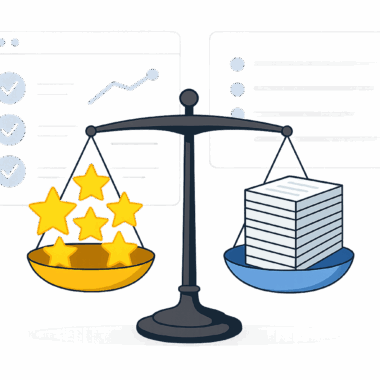

Why Lead Quality Matters More Than Quantity

Content:
- Understanding Lead Quality vs. Lead Quantity
- The Hidden Costs of Low-Quality Leads
- Key Metrics That Define Lead Quality
- How to Improve Lead Quality
- The Role of Technology in Lead Qualification
- Aligning Marketing and Sales Teams
- Measuring ROI and Building a Long-Term Strategy
- Conclusion
- FAQ
In the era of data-driven marketing, businesses often measure success by the number of leads generated. However, the true metric of performance lies not in the volume of leads but in their conversion potential. The modern approach, supported by affiliate marketing management services, focuses on identifying high-intent prospects who demonstrate real interest and buying readiness rather than merely increasing lead counts. A smaller pool of qualified leads can yield higher ROI, stronger customer retention, and a more predictable sales cycle.
This article examines why lead quality outweighs quantity in long-term business success. It explores how data analytics, lead scoring, and interdepartmental collaboration contribute to better conversion rates, efficient resource allocation, and measurable growth. By understanding the principles of quality-based lead management, companies can align their marketing and sales efforts with profitability rather than vanity metrics.
Understanding Lead Quality vs. Lead Quantity
Lead quality represents the probability that a potential customer will convert into a paying client. These leads meet predefined criteria such as budget, authority, need, and timeline (BANT), making them strategically valuable. Quantity-driven campaigns, on the other hand, focus on generating large volumes of leads without assessing their intent or fit — often resulting in resource wastage and low conversion rates.
A practical example: a campaign producing 1,000 leads with a 2% conversion rate may deliver fewer actual customers than one generating 200 leads at 15% conversion. Focusing on quality over volume ensures higher marketing efficiency and better alignment between acquisition cost and lifetime customer value. Companies that master this balance achieve stronger ROI and consistent revenue growth.
The Hidden Costs of Low-Quality Leads
Low-quality leads create hidden operational and financial costs that erode profitability. Sales teams waste hours qualifying unfit prospects, marketing budgets are misallocated to non-performing channels, and data integrity suffers. Over time, this misalignment leads to inflated acquisition costs and declining morale among sales representatives.
The consequences of poor lead quality extend beyond lost sales opportunities. When marketing communications reach irrelevant audiences, brand reputation can decline due to perceived spam or misrepresentation. In regulated industries like iGaming or finance, low-quality leads may also trigger compliance issues, increasing legal and reputational risks.
Comparison of lead quality impact:
|
Category |
Low-Quality Leads |
High-Quality Leads |
| Conversion Rate | Low (1–3%) | High (10–25%) |
| Sales Cycle Length | Extended and unpredictable | Shorter and structured |
| Customer Lifetime Value | Minimal or negative | High recurring value |
| Operational Efficiency | High workload, low return | Optimized and measurable |
| Compliance Risk | Elevated | Controlled and compliant |
Key Metrics That Define Lead Quality
To evaluate lead quality accurately, affiliate managers and marketing professionals must rely on measurable indicators that reflect engagement, conversion potential, and long-term value. These metrics establish a data foundation for objective decision-making and continuous optimization.
The most reliable indicators include conversion rate, lead-to-customer ratio, average deal size, engagement level, and customer lifetime value (CLV). By tracking these parameters across campaigns, marketers can distinguish between effective channels and those generating low-value traffic.
Key performance metrics include:
- Lead-to-Customer Ratio – Percentage of leads that become paying customers.
- Conversion Rate – Proportion of leads performing the desired action (e.g., deposit, subscription).
- Customer Lifetime Value (CLV) – Estimated total revenue generated by a customer over time.
- Engagement Metrics – Email open rate, click-through rate, and time spent on page.
- Lead Source Credibility – Validated origins of traffic, ensuring authenticity and compliance.
How to Improve Lead Quality
Improving lead quality requires a strategic approach that combines data analytics, refined targeting, and interdepartmental alignment. Companies should analyze historical data to identify high-converting customer profiles and optimize acquisition channels based on that intelligence.
Marketing teams can refine ad targeting and messaging to attract leads with stronger intent, while sales departments should provide real-time feedback on lead suitability. Lead nurturing campaigns that educate and qualify prospects through automated workflows further enhance conversion potential.
Actionable steps for improving lead quality:
- Define ideal customer personas using demographic and behavioral data.
- Refine ad targeting and content strategy based on conversion insights.
- Implement lead scoring systems in CRM to prioritize engagement-ready prospects.
- Integrate marketing automation tools to pre-qualify leads through behavior tracking.
- Ensure regular communication between marketing and sales to refine qualification criteria.
The Role of Technology in Lead Qualification
Technology plays a decisive role in improving lead quality and operational efficiency. AI-powered lead management tools assess behavioral signals such as session duration, engagement depth, and multi-channel interaction frequency to assign predictive lead scores. These systems continuously learn from conversion data, refining models for greater precision over time.
CRM systems, integrated with automation platforms and data enrichment APIs, ensure that only verified, high-intent leads enter the sales pipeline. By synchronizing data across marketing, sales, and analytics systems, companies reduce redundancy and maintain a clean, compliant database. This enables faster response times and increased sales productivity.
Technology solutions for lead qualification:
- AI-based lead scoring engines for predictive analytics.
- CRM platforms integrated with automation and marketing intelligence tools.
- Data validation APIs for email, IP, and identity verification.
- Real-time dashboards to monitor lead engagement and conversion trends.
Aligning Marketing and Sales Teams
The alignment of marketing and sales teams is fundamental to maintaining consistent lead quality. Disconnection between departments results in mismatched expectations, redundant outreach, and wasted resources. A unified lead definition framework allows both teams to evaluate prospects through the same criteria and metrics.
Shared KPIs, regular feedback loops, and integrated CRM visibility improve the conversion process. When marketing understands which leads deliver value and sales recognizes the source of qualified traffic, both departments operate more efficiently and profitably.
Best practices for marketing and sales alignment:
- Develop a unified lead qualification framework with defined scoring criteria.
- Hold biweekly review meetings to assess campaign performance and feedback.
- Use shared CRM dashboards for transparency in lead progression.
- Incentivize collaboration by aligning team goals with conversion outcomes.
Measuring ROI and Building a Long-Term Strategy
Lead quality directly influences return on investment (ROI) by improving conversion rates and reducing acquisition costs. Tracking ROI across campaigns helps determine which sources deliver sustainable value versus short-term spikes in volume. High-quality leads create a predictable pipeline, supporting long-term business forecasting and resource planning.
Organizations should implement continuous data review cycles to maintain accuracy. This involves auditing lead sources, refining scoring models, and adapting outreach strategies based on performance analytics. Over time, a culture of quality-focused marketing drives consistent growth and brand reputation.
Key strategic recommendations:
- Measure ROI using a combination of CLV, CAC (Customer Acquisition Cost), and retention metrics.
- Conduct quarterly audits of lead sources for quality assurance.
- Establish feedback mechanisms between teams for ongoing optimization.
- Adopt automation platforms to monitor and enhance long-term lead performance.
Conclusion
The modern marketplace rewards precision, not volume. Businesses that prioritize lead quality gain more predictable revenue streams, higher lifetime customer value, and stronger brand equity. Focusing on fewer, more qualified leads reduces waste and increases operational efficiency. It transforms lead generation from a numbers game into a sustainable growth strategy.
By leveraging analytics, automation, and collaboration, companies can build an intelligent lead management framework rooted in measurable quality. In doing so, they align marketing investments with long-term profitability and market resilience.
Frequently Asked Questions (FAQs)
- What defines a high-quality lead?
A high-quality lead is one that fits the target profile, shows clear intent, and has a high probability of conversion based on behavioral and demographic data.
- Why does lead quality matter more than quantity?
Because high-quality leads convert more efficiently, reducing acquisition costs and maximizing revenue potential.
- How can CRM and automation tools improve lead quality?
They automate scoring, track behavior, and filter out low-intent leads before they reach sales teams.
- What are the key metrics to evaluate lead quality?
Conversion rate, CLV, engagement level, and source credibility are primary indicators.
- How do marketing and sales alignment affect lead quality?
It ensures that both departments work toward shared objectives and optimize the pipeline based on accurate data.
5 Safety Tips Before Finding Affiliates
Affiliate marketing can be an effective way to drive traffic and increase sales, but only when it’s done correctly. As a matter of fact, there are many benefits for your business from partnering with affiliates. If you’re thinking about creating an affiliate program for your business, check out these tips on how to do it responsibly and ethically.

Best B2B Customer Acquisition Strategies in 2025 – The Full Guide
The B2B customer acquisition landscape is undergoing significant changes in 2025. As decision-making processes grow more complex and digital channels evolve, businesses must adapt their strategies to remain competitive. Buyers are more informed, expect personalized experiences, and increasingly prefer remote or digital-first interactions.

How to Handle High-Volume Lead Traffic Efficiently
The goal of efficient lead handling is not to process every contact instantly but to ensure that each qualified lead receives timely attention from the right representative. This article outlines proven methods for managing large-scale inbound pipelines, focusing on CRM infrastructure, automation, data quality, intelligent routing, and scalable communication systems that sustain operational excellence.



